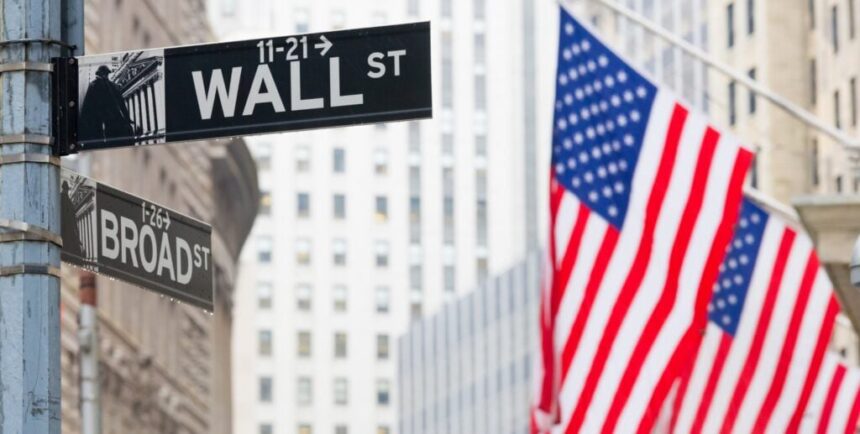Wall Street is not exactly the easiest group of institutions to defend, in large part because they most certainly do merit an enormous amount of criticism for many of the financial shenanigans they engaged in that helped contribute to the 2008 Financial Crisis, such as being bailed out by taxpayers only to give out exorbitant bonuses to their executives before needing to be bailed out again when COVID struck. And that doesn’t mention the variety of illegal and dubiously legal schemes they’ve engaged in over the years.
But of late, an almost bipartisan chorus has emerged amongst critics of high finance: Wall Street is buying up houses across the country to drive up prices and making homeownership unaffordable for most Americans.
Senator Elizabeth Warren, like many Democrats, accuses Wall Street of “hoovering up a significant chunk of the housing market.”
Since the Great Recession, institutional investors have bought up hundreds of thousands of single-family homes, hoovering up a significant chunk of the housing supply and hiking rents by double digit margins. It’s time to loosen Wall Street’s grip on the housing market.
— Elizabeth Warren (@SenWarren) December 31, 2023
But many Republicans have also been saying similar things. For example, Texas Governor Greg Abbott is calling on state legislators to limit the number of houses institutional investors can purchase. And across the populist elements on all sides of the political spectrum, you can find people decrying Wall Street’s nefarious attempt to create a “nation of renters.”
Fortunately, in this case, Wall Street is (mostly) innocent of this charge. Unfortunately, due to this false impression, dubious legislation that will hurt small and mid-sized investors (and thereby the cities they invest and renovate houses in) has been introduced. Furthermore, actual solutions to housing’s unaffordability in the United States have been largely ignored as political activists chase after this red herring.
How Many Houses Has Wall Street Actually Bought?
When just looking at a graph showing the percentage of houses institutional buyers have purchased in the last few years, it would seem that Elizabeth Warren and Greg Abbott are, if anything, understating the problem.

That is until you look on the left side of the chart and see that what appears to be a skyrocketing amount of houses being bought by institutional investors only changed the percentage they purchased from about 0.5% to 2.5%, not exactly what I would call a “significant chunk.”
Gary Beasley, CEO of Roofstock, is more precise, pointing out in an article he wrote for Forbes:
“[We] estimate that large-scale landlords today own approximately 450,000 of the roughly 20 million single-family rentals in the U.S. While this represents considerable growth over the past decade, it represents less than 2.5% of all single-family rentals and less than 0.5% of all single-family homes (including owner-occupied).”
I should emphasize that Beasley states there are 20 million single-family rentals in the United States. In total, according to the Urban Institute, in 2018 there were 83.3 million single-family homes owned by either landlords or homeowners.
The percentage of homes being bought by all investors had actually been decreasing from 2013 until the end of 2020; from 29% of all purchases to 20.5%.

While purchases of single-family houses by large financial institutions increased dramatically in 2021—in large part to take advantage of historically low interest rates—they still only made up a tiny percentage of the overall market. And according to John Burns Research and Consulting, the rate of purchases by such institutions has fallen by over 80% since its peak in the second quarter of 2022!

Furthermore, hedge funds and investment banks not only made up just a tiny percentage of the overall homes being bought, they also made up only a tiny percentage of the homes being bought by real estate investors.

Instead, the vast majority of properties bought by real estate investors are bought by the type of people who frequent BiggerPockets and put billions of dollars and millions of hours each year into renovating and maintaining the nation’s housing stock.
In fact, some institutional investors, such as VineBrook Homes, are not just no longer buying, but are actually starting to liquidate their single-family portfolio. So whatever effect Wall Street is having on the housing market (at least through purchasing properties) is tiny.
What Can Be Done About Affordability?
As with most things, rental and home prices are driven by supply and demand. Right now, there are too many people chasing too few properties, in large part because new construction ground to a halt after the Great Recession while the population continued to grow.
Removing people isn’t a practical or moral solution (although a reduction in immigration levels is probably called for, at least until the housing market has normalized). Therefore, what’s needed is to increase building.
Part of the problem is that interest rates are high right now. Given that inflation has cooled, it’s probably time for the Federal Reserve to start bringing rates back down to stimulate construction and reduce the debt costs to homebuyers.
Furthermore, while some regulations are needed in home and apartment construction, they have gotten out of hand in many places. One study from the National Association of Home Builders in 2021 found that “On a dollar basis, applied to the current average price ($394,300) of a new home, regulation accounts for $93,870 of the final house price.”
Cutting that $93,870 number down or even in half doesn’t seem utopian or particularly dangerous and would provide a great boon to construction.
I should further note that in some places, particularly on the coasts, it’s much worse than what the NAHB showed. Economists Ed Glaeser and Joe Gyourko found that because of the “onerous regulatory framework” in San Francisco, “where a standard house should cost about $300,000 [to build]—but in reality is more like $800,000 (based on 2013 figures).”
Final Thoughts
Legislation banning Wall Street from buying houses will have little to no effect, while legislation penalizing real estate investors as a whole (like what was recently introduced in Congress) will make the situation worse by disincentivizing investors from buying and fixing currently unlivable units. What you tax, you get less of, so more blighted units would remain in such a condition instead of being brought back to life and readmitted into the nation’s housing stock.
Regardless, building will take time, so housing’s unaffordability will not end anytime soon. But the less time we spend on distractions like “Wall Street buying up all the houses,” and the faster we get on building, the less time it will take to actually solve this problem.
Ready to succeed in real estate investing? Create a free BiggerPockets account to learn about investment strategies; ask questions and get answers from our community of +2 million members; connect with investor-friendly agents; and so much more.
Note By BiggerPockets: These are opinions written by the author and do not necessarily represent the opinions of BiggerPockets.








